Greek Yogurt Cookies (Low Calories, High Protein)
This recipe may contain Amazon or other affiliate links. As an Amazon Associate I earn from qualifying purchases.
These Greek Yogurt Cookies are the healthiest cookies naturally packed with protein from Greek Yogurt. They are soft, chewy, and fat-free, no butter or oil is needed.
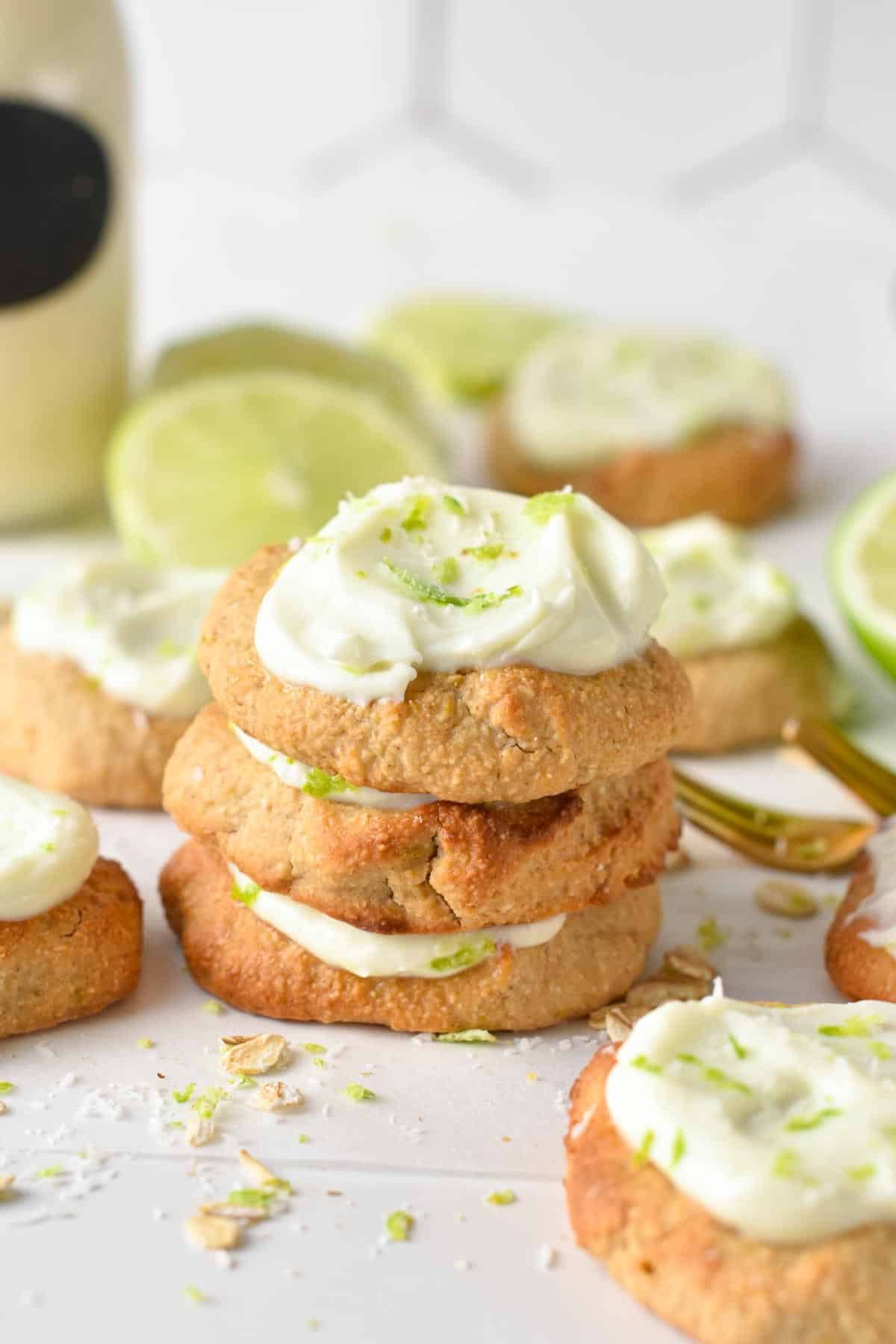
I love making healthy dessert recipes with Greek yogurt, like my Greek Yogurt Protein Pancakes, Greek Yogurt Brownies, Greek Yogurt Protein Shake because it brings a lot of texture and taste as well as natural protein.
Who can resist a dessert that contain only 86 kcal, tastes amazing, and is packed with wholesome ingredients? That’s the story behind these lime yogurt cookies. They are your safe sweet snack to fill full and fix your sweet tooth with great ingredients.
Greek yogurt cookies are a healthy option using Greek yogurt instead of oil or butter. They are also made from unrefined flour, like oat flour or almond flour, to deliver a higher-nutrition profile cookie with a soft and chewy texture.
Ingredients and Substitutions
To make these Greek yogurt cookies you need:
- Egg – I use fresh large free-range eggs.
- Oat Flour – You should have success with almond flour but you will need a bit more of it as it won’t absorb liquid as well.
- Plain Greek Yogurt – Feel free to use low-fat Greek yogurt to cut down the calories.
- Crystal Sweetener – I like erythritol because it’s sugar-free, natural, and has zero calories. But feel free to use coconut sugar or unrefined cane sugar.
- Lime Juice – Fresh or bottled.
- Lime Zest – Or lemon zest.
- Baking Powder – Make sure it’s fresh before using. You can check that by putting some in water, it should fizz.
- Vanilla Extract – For flavor.
How To Make Greek Yogurt Cookies
These Greek Yogurt cookies are for the healthy cookie lovers. They are not your regular cookies made with all-purpose flour. But, they are guilt-free packed with nutrient and with the most irresistible chewy texture and lime flavor.
- In a large mixing bowl, whisk the egg, Greek yogurt, vanilla extra, sweetener, and lime juice. When the mixture is smooth, use a silicone spatula to stir in oat flour, salt, and baking powder.
- Stir in the lime zest to evenly incorporate when the batter is ready. The batter should be sticky, thick, and moist. It shouldn’t be dry – this means you added too much oat flour or not enough liquid.
- Preheat the oven to 350°F (180°C). Line a large baking sheet with parchment paper. Grease the paper with cooking oil spray.
- Use a cookie scoop to take some cookie dough from the bowl. It’s very sticky!
- Scoop out about 1 1/2 tablespoons of batter, and lightly wet your hands with water to roll the dough into a smooth ball. The dough is sticky, and you must wet your hands before rolling each cookie ball. You can also release the batter in a messy dollop on the baking sheet to make it easier, less pretty but taste the same!
- Lightly press the top of each dough balls with wet fingers.
- Bake the cookies until golden brown or for about 15 to 18 minutes at 350°F (180°C) on the center rack of your oven.
- Let the cookies cool down for 5 minutes on the baking sheet at room temperature.
- Then transfer them to a wire rack to fully cool down at room temperature before frosting.
Frosting
It’s optional to frost the cookies, but it adds a creamy fresh texture and extra protein. This Greek yogurt cookie cream frosting won’t harden, or a little after the cookies spend two days in the fridge.
To make it, simply stir Greek yogurt, powdered sweetener like sugar-free powdered allulose to keep the calories down, and lime juice. Spread a teaspoon on top of each cookie. Then, add a sprinkle of lime zest and coconut to decorate.
Flavor Variations
If you are not a big fan of the lime flavor, you can try to make:
- Greek Yogurt Chocolate Chip Cookies – Remove the lime juice, use almond milk instead, and skip the lime zest. Instead, stir in 1/3 cup of chocolate chips into the dough and evenly incorporate them.
- Greek Yogurt Almond Coconut Cookies – Skip the oat flour. Use two cups of almond flour with two tablespoons of coconut flour.
Storage Instructions
You can store the cookies in an airtight container in the fridge for up to 3 days. Freeze the leftover cookies in Ziploc bags for up to one month. Thaw them in the fridge the day before serving.
Allergy Swaps
Below are some ingredients substitutions ideas if you need.
- Gluten-Free – Use gluten-free certified oats and turn them into oat flour in a high-speed blender.
- Egg – I didn’t try egg replacers but I am confident that store-bought egg replacers, or a flax egg works. To make the flax egg, stir one tablespoon of ground flaxseeds with 3 tablespoons of lukewarm water. Set aside for 10 minutes then use as an egg in the recipe.
- Dairy-Free – dairy-free Greek-style yogurt like soy yogurt will work.
- Sweetener – Use any granulated sweetener you love from light brown sugar to allulose.
- Citrus-Free – Skip lime juice for almond milk. Remove lime zest.
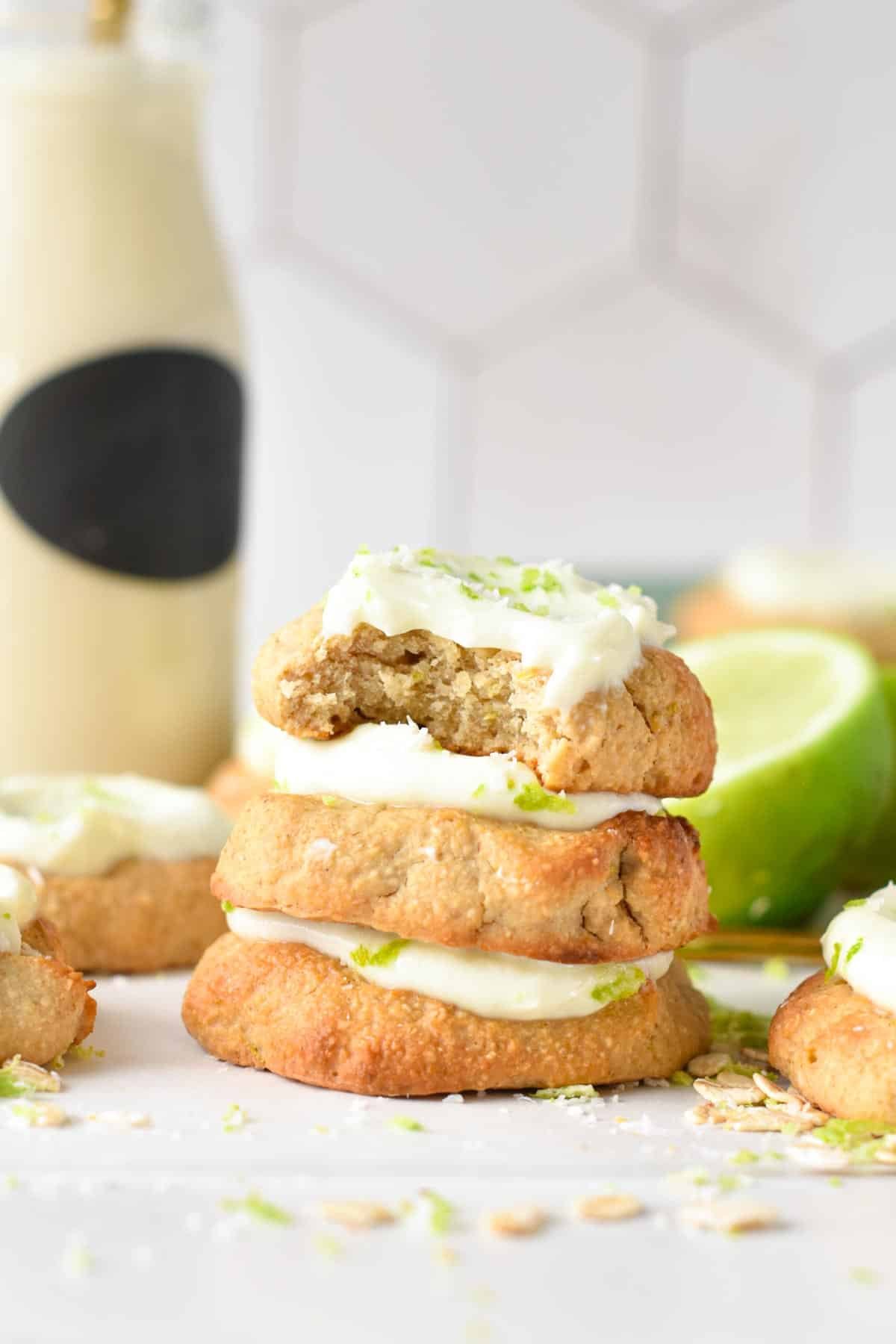
Frequently Asked Questions
Here are my answers to your most common questions about this Greek yogurt cookie recipe.
Greek yogurt is high in protein and moisture. In baking, it adds moisture and toughens cake crumbs due to the extra protein.
Most of the time, yogurt is used to decrease fat and calories while adding proteins to baked goods.
Yes, most recipes will work well with yogurt instead of butter.
However, don’t expect the same texture. Yogurt adds moisture and makes the cookies chewier, sometimes too moist if you don’t balance the amount of flour in the recipe.
More Healthy Cookie Recipes
If you like this cookie recipe, you’ll love these other healthy cookies:
Did You Like This Recipe?
Leave a comment below or head to our Facebook page for tips, our Instagram page for inspiration, our Pinterest for saving recipes, and Flipboard to get all the new ones!

Greek Yogurt Cookies
Ingredients
- 1 large Egg
- ⅓ cup Granulated Sweetener coconut sugar or sugar-free erythritol/allulose
- 1 ¾ cup Oat Flour lightly packed, swept
- ¾ cup Greek Yogurt
- 1 teaspoon Lime Zest
- 1 tablespoon Lime Juice
- 1 teaspoon Vanilla Extract
- ¼ teaspoon Salt
- 1 teaspoon Baking Powder
Greek Yogurt frosting
- 1 tablespoon Lemon Juice
- ⅓ cup Greek Yogurt
- ½ cup Powdered Erythritol or icing sugar
Instructions
- In a large mixing bowl, whisk the egg, Greek yogurt, lime juice, vanilla extract, and sweetener until smooth.
- Add oat flour, salt, and baking powder. Using a silicone spatula, stir to combine ingredients together. The cookie dough should be moist, sticky but not liquid.
- Fold in the lime zest and stir to incorporate. Set aside for 10 minutes at room temperature.
- Meanwhile, preheat the oven to 350°F (180°C). Line a large cookie sheet with parchment paper. Lightly oil with cooking spray. Set aside.
- Check the cookie dough. If too wet, add an extra 2-3 tablespoons of oat flour and stir to incorporate.
- Use a cookie dough scoop to scoop 1 1/2 tablespoons. The dough is very sticky and soft, so I recommend lightly wetting your hands to help release the dough on the sheet. You can roll the dough in a ball between wet hands to make the cookie smoother.
- Lightly press the top of each cookie with oiled or wet fingers to flatten them.
- Bake the cookies for 15-18 minutes at 350°F (180°C) or until lightly golden brown on the sides.
- Cool the cookies for 5 minutes on the baking sheet before transferring them to the wire rack to cool completely.
Greek yogurt frosting
- In a small mixing bowl, whisk the Greek yogurt, lime juice, and sugar-free powdered sugar.
- Add a teaspoon on top of each cookie. Then add a pinch of lemon zest and shredded coconut.
Storage
- Store in an airtight container in the fridge for up to 4 days. The frosting stays soft, so don't stack the cookies. The frosting hardens lightly in the fridge after a few days. You can freeze them in zip-lock bags for up to one month. Thaw in the fridge.
Want My Kitchen Equipment?
Nutrition
Disclaimer
The recipes, instructions, and articles on this website should not be taken or used as medical advice. The nutritional data provided on Sweetashoney is to be used as indicative only. The nutrition data is calculated using WP Recipe Maker. Net Carbs is calculated by removing the fiber and some sweeteners from the total Carbohydrates.
You should always calculate the nutritional data yourself instead of relying on Sweetashoney's data. Sweetashoney and its recipes and articles are not intended to cure, prevent, diagnose, or treat any disease. Sweetashoney cannot be liable for adverse reactions or any other outcome resulting from the use of recipes or advice found on the Website.
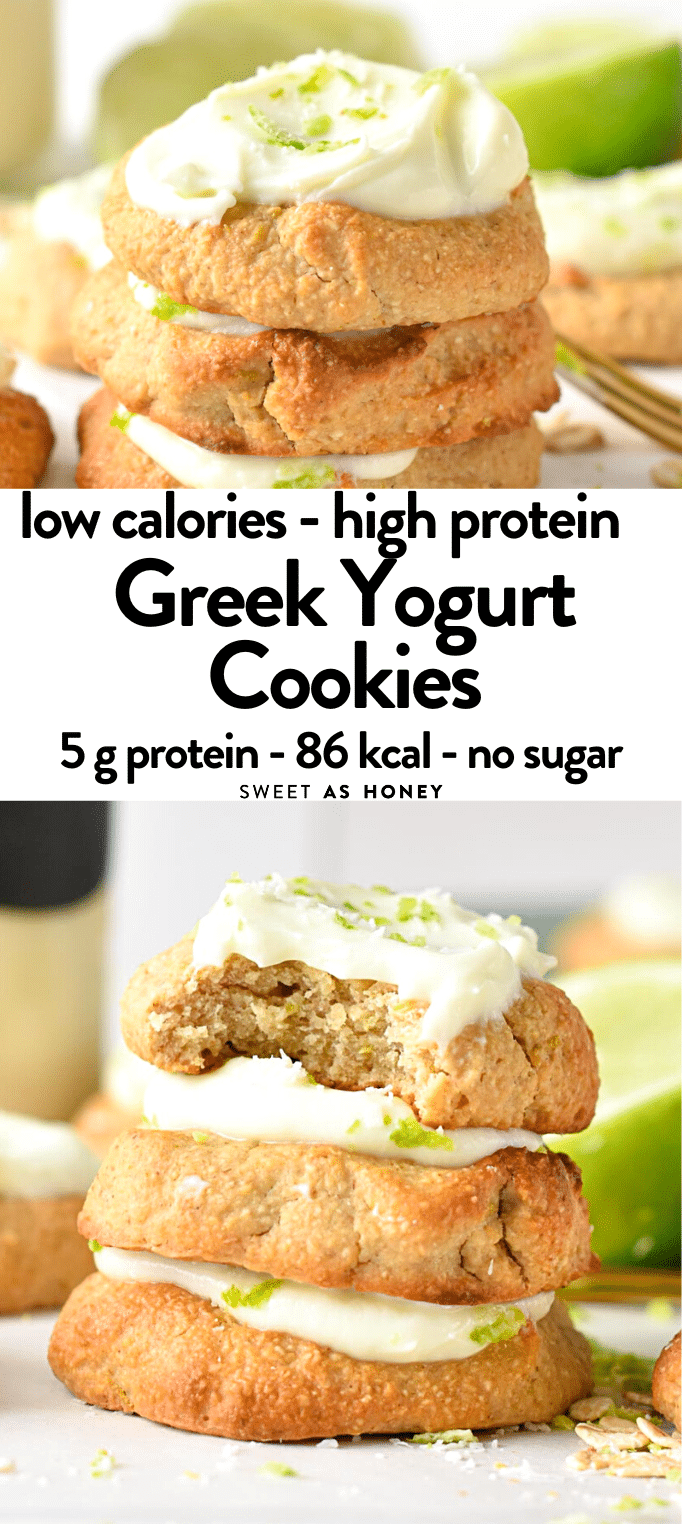





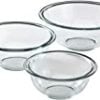
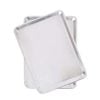



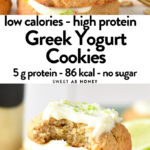
Share this post!
If you enjoyed this post, share it with your close ones!
Leave a comment
Love your recipes! Thank you from Devonport in Tasmania, Australia